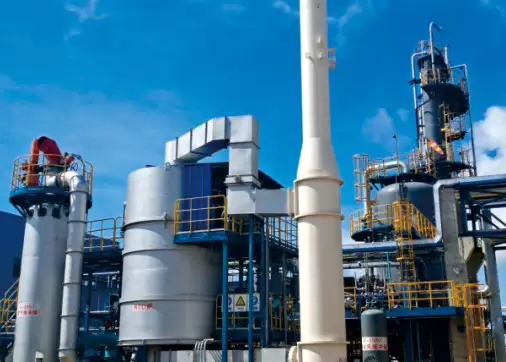RTO Air Pollution Control Methods
Introduction
Air pollution is a pressing issue that affects the environment and human health. To mitigate this problem, various methods have been developed, including Regenerative Thermal Oxidizers (RTOs). RTOs are highly effective in controlling air pollution and have become a popular choice in industries. In this article, we will explore the different aspects of RTO air pollution control methods.
How RTOs Work
– RTOs are designed to remove pollutants from industrial exhaust streams through thermal oxidation.
– The process involves heating the exhaust gases to a high temperature, usually above 1,400¡ãF, in a combustion chamber.
– The heated gases are then directed into a ceramic bed, which acts as a heat storage medium.
– The pollutants in the gases are oxidized as they come into contact with the hot ceramic bed.
– The clean, treated gases are released into the atmosphere, while the heat stored in the ceramic bed is used to preheat the incoming exhaust gases.
Advantages of RTOs
– Highly Efficient: RTOs are known for their high destruction efficiency, typically exceeding 95%.
– Cost-effective: RTOs can recover and reuse up to 95% of the heat generated during the process, resulting in significant energy savings.
– Versatile: RTOs can handle a wide range of pollutants and can adapt to varying exhaust gas volumes and temperatures.
– Low Maintenance: RTOs have low maintenance requirements due to their robust design and use of durable materials.
– Environmental Benefits: RTOs help reduce air pollution by effectively treating harmful pollutants before their release into the atmosphere.
Applications of RTOs
– Chemical Industry: RTOs are commonly used in chemical plants to control emissions of volatile organic compounds (VOCs) and hazardous air pollutants (HAPs).
– Manufacturing Industry: RTOs find applications in various manufacturing processes, including paint and coating production, pharmaceutical manufacturing, and semiconductor production.
– Waste Treatment Facilities: RTOs are effective in treating odorous gases and volatile organic compounds (VOCs) released from waste treatment facilities.
– Automotive Industry: RTOs are used in automotive manufacturing plants to control emissions from paint booths and other production processes.
Challenges and Future Developments
– Energy Consumption: RTOs require a significant amount of energy for operation, and efforts are being made to optimize energy usage and reduce operating costs.
– Advanced Control Systems: Research is ongoing to develop advanced control systems that can enhance the efficiency and performance of RTOs.
– Integration with Renewable Energy Sources: There is a growing interest in integrating RTOs with renewable energy sources to further reduce the environmental impact of air pollution control methods.
Conclusion
Regenerative Thermal Oxidizers (RTOs) are a highly effective air pollution control method used in various industries. Their ability to efficiently remove pollutants and recover heat makes them a sustainable choice for mitigating air pollution. As industries continue to prioritize environmental sustainability, RTOs are expected to play a crucial role in reducing air pollution and ensuring a cleaner future.


Company Introduction
Our company is a high-tech enterprise specializing in comprehensive management of volatile organic compound (VOC) exhaust gas and carbon reduction and energy-saving technologies. We focus on the manufacturing of advanced equipment in this field.
Core Technologies
Our core technologies include thermal energy, combustion, sealing, and automatic control. We have the capabilities for temperature field simulation, airflow simulation modeling, ceramic heat storage material performance evaluation, molecular sieve adsorbent selection, and high-temperature VOCs organic compound incineration oxidation experiments.
Team Advantages
We have established RTO technology research and development center and exhaust gas carbon reduction engineering technology center in Xi’an, as well as a 30,000©O production base in Yangling. We are a leading manufacturer in global RTO equipment and molecular sieve rotor equipment. Our core technology team consists of experts from the Aerospace Liquid Rocket Engine Research Institute (Sixth Academy of Aerospace). We currently have more than 360 employees, including over 60 R&D technical backbone members. Among them, we have 3 senior engineers at the research professor level, 6 senior engineers, and 47 thermodynamics PhD holders.
Core Products
Our core products include rotary valve regenerative thermal oxidation furnaces (RTO) and molecular sieve adsorption concentrators. Combined with our expertise in environmental protection and thermal energy system engineering, we provide customers with comprehensive solutions for industrial exhaust gas treatment and carbon reduction with energy utilization under various operating conditions.

Certifications and Qualifications
We have obtained the following certifications, patents, and honors:
– Intellectual Property Management System Certification
– Quality Management System Certification
– Environmental Management System Certification
– Construction Industry Enterprise Qualification
– High-Tech Enterprise Status
– Patent for Rotary Valve in Regenerative Thermal Oxidation Furnace
– Patent for Rotary Rotor Heat Storage Incineration Equipment
– Patent for Disc Zeolite Rotor

Choosing the Right RTO Equipment
- Determine the characteristics of the exhaust gas
- Understand local regulations and emission standards
- Vyhodnoťte energetickou účinnost
- Zvažte provoz a údržbu
- Analyze budget and cost
- Vyberte vhodný typ RTO
- Zvažte environmentální a bezpečnostní faktory
- Conduct performance testing and verification
RTO Air Pollution Control Service Process
- Preliminary consultation, on-site inspection, and needs analysis
- Solution design, simulation, and review
- Zakázková výroba, kontrola kvality a tovární testování
- Instalace, uvedení do provozu a školení na místě
- Pravidelná údržba, technická podpora a dodávky náhradních dílů
In summary, we provide a one-stop solution for RTO kontrola znečištění ovzduší. Our professional team tailors RTO solutions to meet each customer’s specific needs.
Autor: Miya
